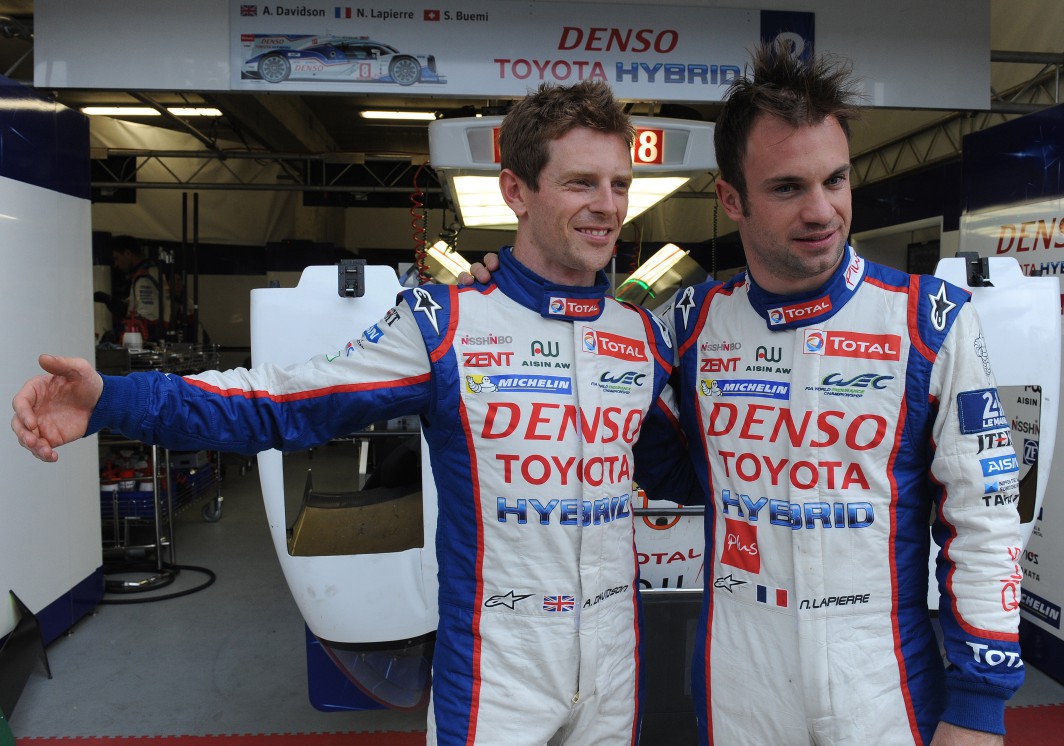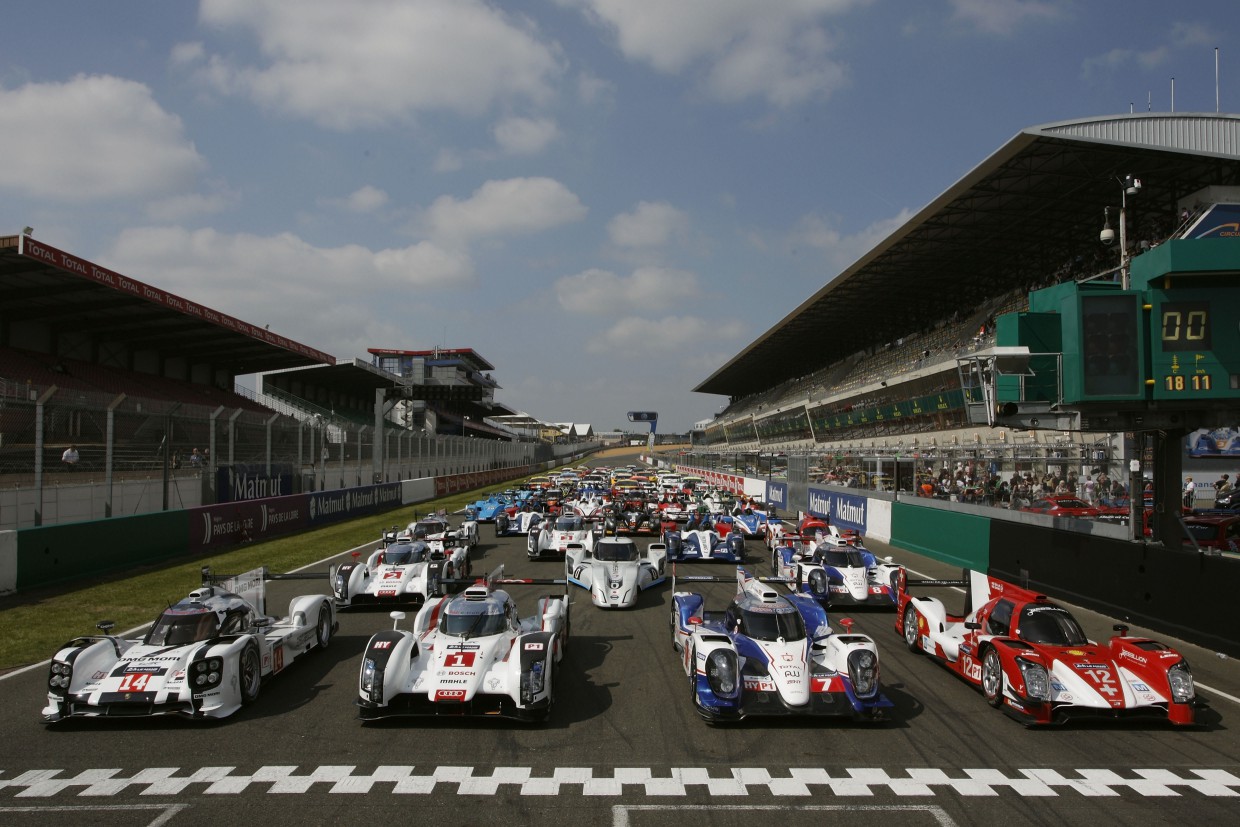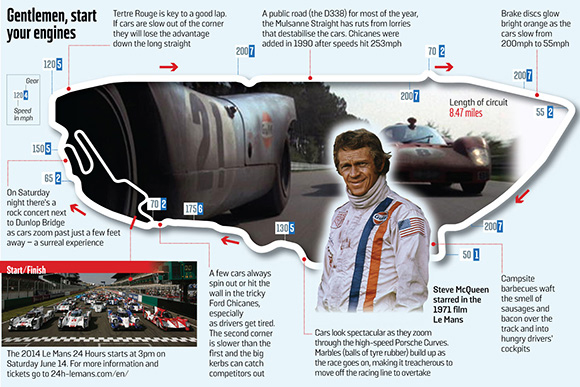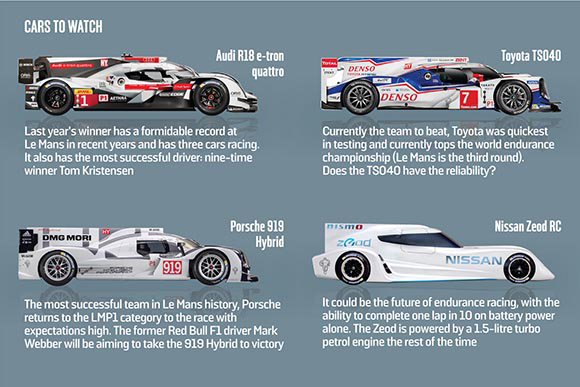Le Mans 24 Hours: 2014
Le Mans 24 Hours, the world's riskiest race, prepares for lift off
YOU’RE RACING towards a solid barrier at more than 200mph in the pitch black. You haven’t slept for 20 hours, and fatigue is starting to set in. There’s a slow car ahead, and if you don’t overtake now you’ll lose the lead. But the next corner is looming ever closer and you’ve got to hit the brakes. Has the car in front seen you? Do you pass on the left or right? Will this nightmare ever end?
For the 30,000 British spectators heading to northwest France to watch the Le Mans 24 Hours this week the race is a day-and-night drama with plucky heroes, dastardly villains and the heady cocktail of burnt rubber, fuel vapour and barbecue smoke.
For the drivers, who race their cars at the very limit for a solid 24 hours, it’s a test quite unlike anything else they will ever face. “It’s bloody hard work,” says Anthony Davidson, a British racing driver and Formula One commentator, who is competing for the Toyota team. “When you get woken up at 3am after you’ve already been driving for hours, you’re knackered. Your body is telling you that you should be asleep and you’re certainly not thinking, ‘This is the best job in the world.’
“But of course you enjoy the challenge. It’s what makes you come back time after time, knowing what a brutal race it is.”

Anthony Davidson, left, and Nicolas Lapierre are among its drivers gunning for glory this year
In modern sports-car racing every second counts, just as in F1. A minor mistake or a slow pit stop could cost you the race. After 355 laps of racing in 2011 Audi won by just 13.85 seconds.
This year the race promises to be even closer. For the first time in more than a decade three teams have a genuine opportunity to win. Audi is aiming for its fifth straight victory, which would be its 13th in the space of 15 years , but it faces tough competition from the Toyotas, led by Davidson’s car, the current favourite, which has topped the timing sheets at test sessions and won world endurance championship races earlier in the season.
It may not win Le Mans but click here to search for used Toyota on driving.co.uk
Then there is the most famous Le Mans name of all. With 16 overall race wins, Porsche is the most successful manufacturer in the event’s 91-year history. Mark Webber is leading its driver line-up after leaving the Red Bull F1 team at the end of last season.
The objective is simple: to travel further in the space of 24 hours than your competitors and then finish the lap you are on without being overtaken. The method is devilish. First the teams must devise cars that are as light and efficient as possible but will keep going non-stop through the day, night, rain and blazing sun. A single failure will spell the end for any hopes of victory.

Then they’ve got to develop the right strategy and software to manage the complicated hybrid systems that they hope will give them the edge. The drivers — three take it in turns — must perform flawlessly. Each takes the wheel typically for two hours (and under the rules not more than four) and then takes a break. In the heat of competition, though, they’re lucky to grab an hour’s sleep between stints before cramming in some pasta, jamming on their helmet and jumping back in the car. If they’re still a bit drowsy, that’s just bad luck: they’ll be flat out at 200mph within 60 seconds.
“This year will be one of the toughest races for many years,” says Oliver Jarvis, another British hopeful, who races for Audi. “In previous years we’ve just been fighting one team, but now there are two and you can’t take your eye off the ball.
“But you do have to take a step back and realise how fortunate you are. I am living a childhood dream to be part of the Audi team and fighting the likes of Toyota and Porsche. One of the great things is the drivers’ parade [which takes place in the centre of Le Mans on the Friday before the race]. That is when you realise how many spectators there are. You hear your name shouted: it’s a great atmosphere.”
Waiting for the big event to start, spectators gather round bonfires in campsites, ride on the funfair attractions and dine on stuffed crêpes. But as the weekend-long party gets into full swing the drivers are solemnly contemplating the risks.
Le Mans has always been recognised as a dangerous race because of the vast grid, the high speeds and driver fatigue, and the hazards of racing there were underlined last year when Allan Simonsen, a Danish driver for Aston Martin, died in a crash. “We had kind of taken the dangers of motor sport for granted,” Jarvis says. “It hit all of us drivers hard.”

The fear factor, though, is one reason Le Mans remains unmissable. “Allan is in everyone’s mind,” says Davidson. “He knew the risks, as we all do. But in a way the danger is what draws me in. It also makes the fans respect the race, knowing the dangers the drivers are facing. It makes it more extreme than most motor races.”
Le Mans is actually four races in one, with different categories of car, from the fastest LMP1 (Le Mans prototype 1) contenders for overall victory to the familiar-looking grand tourers, or GTs, such as Porsche 911s and Ferrari 458 Italias , which travel about 30mph slower on the straights and cannot corner as fast. The leading drivers will lap them so many times that, with 56 cars in the race, each LMP1 car will make an average of 1,200 passes over the 24 hours. It’s sometimes chaotic and poses an extra challenge for those heading the field.
The GT amateur category is usually the slowest of the four, attracting newcomers, wealthy enthusiasts and celebrities — some of them excellent racers — seeking their share of Le Mans magic. This year the former France and Manchester United goalkeeper Fabien Barthez is in a Ferrari, attempting to be the first person to have a World Cup winner’s medal and a Le Mans trophy. The Grey’s Anatomy actor Patrick Dempsey is returning for his third Le Mans race at the wheel of a Porsche 911. Another Porsche 911 driver is David Hallyday, son of the French rock star Johnny Hallyday.

For the teams and drivers it’s all about the glory, but for the manufacturers backing the sport, endurance racing is about boosting sales. Having your brand win the toughest race in the world can’t help but heighten your appeal. There are other benefits, too, such as the opportunity to put new components through their paces. The laser headlights on the Audi R18 e-tron quattro LMP1 racer will be fitted to its latest R8 supercar later this year. Porsche simultaneously developed the 918 spyder road car and the 919 LMP1 racing car, which share hybrid technology.
Nissan plans to improve its lithium-ion batteries by entering in a special research category its Zeod RC hybrid car, which can complete a lap on electricity.
“We won’t win the race,” says Darren Cox, global head of brand, marketing and sales for Nismo, Nissan’s performance arm. “But we hope to be the first manufacturer to compete a full racing lap on electric power alone.”
Click here for more information about the race




